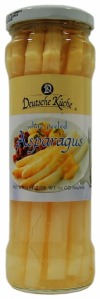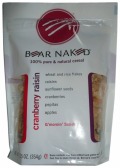Stove use down, microwave use up
Kroger debuts consumer-trackable salads
More traceability: IFT releases study done for FDA
Jar gives good look at asparagus
Bear Naked signs on with TerraCycle

approaches to healthier marketing
by Rick Lingle
Executive Editor
A report fromInformation Resources Inc.released Nov. 30 sheds light on consumer lifestyle trends amidst a sputtering economic recovery.
According to IRI’s report,Health & Wellness: Redefining Healthy Living, Americans continue to have a love-hate relationship with healthy eating and living habits. On the one hand, the Centers for Disease Control reports that U.S. life expectancy has increased three years in just the past decade. On the other hand, the prevalence of obesity has tripled over the last 30 years, and only about one-third of Americans work out on most days despite constant bombardment regarding the value of exercise.
IRI’s report maintains that there are tactics that consumer packaged goods (CPG) manufacturers can use to increase market share of better-for-you foods and beverages across households of all incomes and other demographics.
“During the past several years, marketing programs have effectively stimulated demand for healthier CPG solutions, but there is still a lot of opportunity for growth,” says IRI’s Thom Blischok, shopper marketing and innovation president. “For instance, retailers and manufacturers should consider leveraging the brand strength of existing national and private brand products and introduce brand extensions that feature healthier and/or organic ingredients. Kellogg's instituted this approach with its Pop-Tarts brand, which now includes whole grains. And, Hostess has taken a different approach by offering portion-controlled packages for several of its snack cakes.”
With disenchantment following the flameout of the Smart Choices Program (seeFood Packaging Insights, Nov. 5), IRI suggests a better nutritional icon program:Guiding Stars.The program, administered by Guiding Stars Licensing Co., Scarborough, Maine, uses a simplified rating system based on the nutritional density of food products per 100 calories. Foods are rated on a point system, ranging from 0 stars (does not meet nutritional requirements to receive any star) to 3 (best nutritional value).
According to its website, Guiding Stars have been issued to more than 60,000 foods, including menu items in restaurants.
Savvy CPG marketers and retailers are also exploring merchandising opportunities, IRI says. Use of displays or kiosks featuring better-for-you products and cross-selling healthier products on packages of “traditional” products are examples.
“The world of CPG marketing is changing quickly,” Blischok says. “As the economy continues to evolve, so too will CPG-related attitudes and behaviors. Today's value and health-oriented environment provides an opportunity for marketers to really connect with shoppers. Those forging solid relationships today will reap rewards long after the recession ends.”
TOP DEVELOPMENTS
Stove use down, microwave use upThe economic downturn can be blamed for a number of lifestyle changes, but causing Americans to cook more is not one of them, according toThe 24th Annual Report on Eating Patterns in America, recently released byThe NPD Group, a market research firm. Americans are eating at home more, and have been since 2000, reports this year’sEating Patterns in America, but in 2008 they turned to their microwaves to serve their food up for them.
According to the study, Americans used their microwave ovens more last year and their stovetops less. Approximately 20% of all meals prepared in U.S. homes from 1990 to 2007 involved the use of a microwave. That was until last year, when usage rose 10%. Stovetops remain the most popular cooking appliance, according to The NPD Group, but the percentage of main meals prepared on a stovetop has dropped from 52% in 1985 to 33% in 2009.
Kroger debuts consumer-trackable salads
Customers can learn more about where the produce used in Kroger’s new line of Fresh Selections ready-to-eat salads was grown. Each bag carries a 16-digit code that shoppers can enter at HarvestMark.com to learn more about the salad’s origin, packing location, ingredients, date and time the product was packed. Customers can also offer their feedback on the product. It’s part of the retailer’s “Quality You Can Trace” program.
“Our partnership with HarvestMark makes it easy for customers who are interested to learn more about the food they purchase for themselves and their families,” says Joe Grieshaber, group vice president of Kroger’s meat, seafood, deli and produce department. “Kroger is committed to helping our customers prepare safe and delicious meals for their families. We look forward to continuing to offer our customers innovative and affordable food safety technology.”
More traceability: IFT releases study done for FDA
A new technical study commissioned by the Food and Drug Administration’s Center for Food Safety and Applied Nutrition has been released by the Institute of Food Technologists. It offers guidelines to establish a comprehensive product tracing system to track the movement of food products effectively from farm to table. Recommendations include requiring electronic-not paper-based-data collection that be conducted at regular intervals, such as daily, via standardized reporting by each supply-chain partner. The report, based on consultations with 58 food companies, will be published in the January 2010 issue ofComprehensive Reviews in Food Science and Food Safety.

NEW PACKAGES
Jar gives good look at asparagusPrivate label white asparagus comes in a tall, thin glass jar that shows off the product to maximum advantage. Deutsche Küche white peeled asparagus from Aldi features whole stalks of the product in a glass jar 7.3 inches high and 2.4 inches wide. A wraparound paper label with a suggested-serving illustration completes the package. The 11.5-ounce product, introduced in November, retails for $1.69.

Bear Naked, the natural cereal line of Kellogg Co., is partnering withTerraCycleto reuse the bags for its cranberry raisin breakfast cereal. The 12.5-ounce product comes in a gusseted, stand-up pouch with twin windows on the front surface. As part of the Bear Naked Sustainable Packaging Project, TerraCycle will accept pouches from consumers for repurposing into bags and other accessories. For every bag collected, 2 cents will be donated to a non-profit organization or school of the consumer’s choice.
